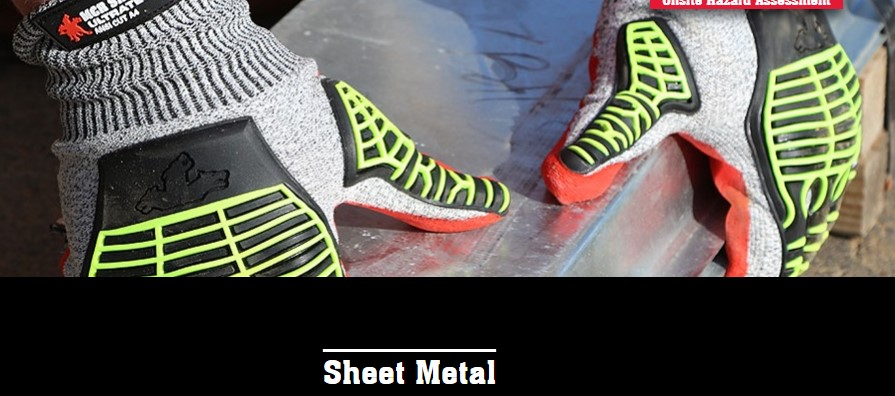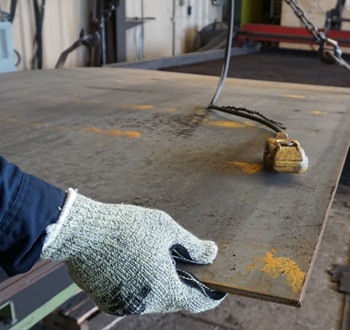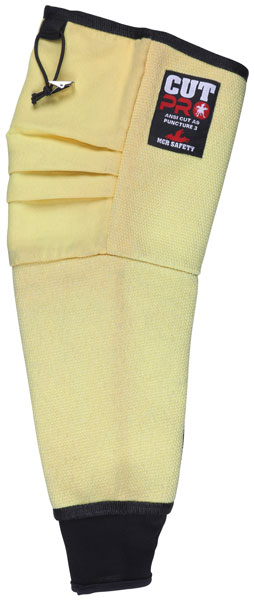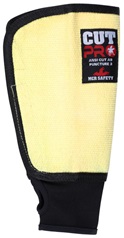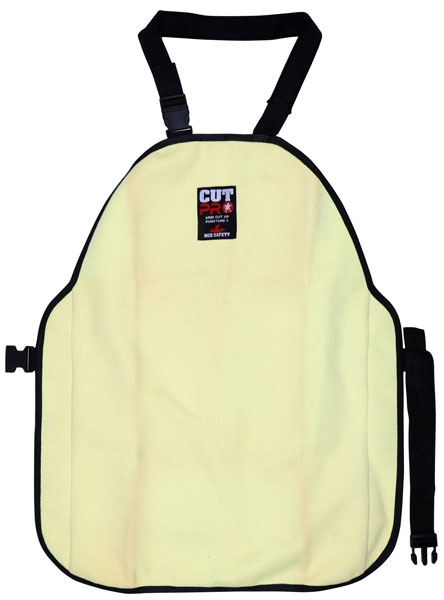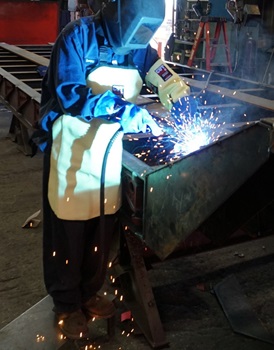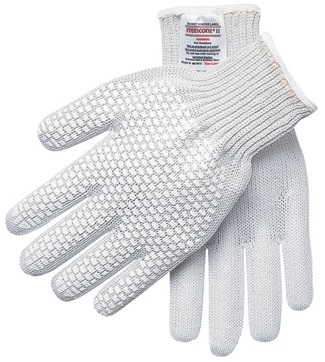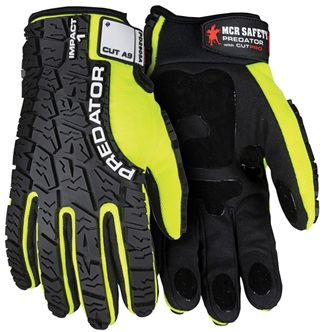There are no good workplace injuries, but cuts and lacerations can be especially horrifying for many workers. Every cut carries the risk of both short- and long-term loss of functionality. Even a seemingly minor cut can become infected, and more serious occurrences can lead to permanent damage, loss of limbs or appendages, and even death.
If this seems to be an unreasonably dire assessment of the risk posed by cut and laceration injuries, consider that the U.S. Bureau of Labor Statistics (BLS) reports that there were 106,410 cut, laceration and puncture injuries in 2015 alone.
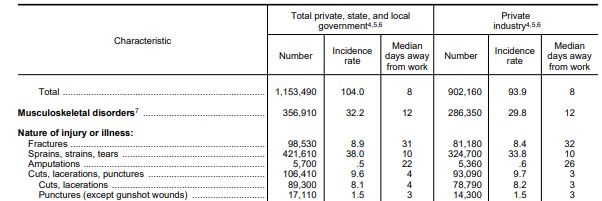
106,410 Cuts, Lacerations, and Puncture Injuries in 2015
Cuts and lacerations represent almost 8% of all occupational injuries and illnesses, with an average of four work days missed per occurrence. Even more alarming, these types of injuries make up the fourth highest injury reported. See the BLS pie chart image below for a breakdown of reported injuries.

9% of all injury cases are cuts, lacerations, and punctures.
For the majority of cut injuries that occur, A2 to A7 cut protection gloves will handle the hazards workers face. However, some occupations require extreme cut protection. Allow us to share with you your options.
Danger Lurks Everywhere
Cuts and lacerations occur at a rate of 8.1 incidents for every 10,000 workers. If you’re a worker, chances are good that either you or one of your co-workers will be cut at some point. If you’re an employer, it’s almost guaranteed that you will be shelling out money for lost productivity and health care costs sooner or later. Therefore, it only makes sense to provide appropriate PPE on the front end, to both protect your workers and to potentially save on indirect costs associated with injury.
Many industries have at least some level of hazard from cuts and lacerations, but workers in accommodation and food services, construction, retail trade, manufacturing, and utilities face elevated cut and laceration risks. See the table below.
| Industry | Cases of Cuts and Lacerations | Total Number of Nonfatal Injuries |
|---|---|---|
| Accommodation and Food Services | 18.2 | 78,560 |
| Construction | 17.9 | 79,890 |
| Retail Trade | 11.5 | 123,770 |
| Manufacturing | 10.9 | 122,610 |
| Utilities | 7.2 | 90,990 |
Top Industries with Cut Injuries
One surprising trend is that cuts and lacerations are now more common in the retail trades than in manufacturing, and the injury numbers there are rising. Opening boxes and handling box cutters is an application that many workers forget can easily cause dangerous cuts.
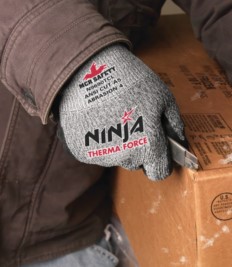
N9690TC protecting a worker’s hand from a box cutter.
Most Dangerous Occupations by Incident Rate
Perhaps not surprisingly, food preparation positions claim the #1 spot on the top 20 list of cut and laceration injuries by occupation. By the numbers, food is more dangerous to work with than sheet metal.
Here are the top 20 occupations with the highest cut, laceration, and puncture incident rates, as reported by the BLS:
| Occupation | Incident Rates (Per 10,000 workers) | |
|---|---|---|
| Cuts, Lacerations, and Punctures | Total Incidence Rate | |
| Food Preparation Workers | 94.5 | 290.8 |
| Sheet Metal Workers | 86.5 | 289.9 |
| Installers | 56.8 | 319.5 |
| Dishwashers | 53.4 | 145.6 |
| Construction Laborers | 46.1 | 265.3 |
| Chefs and Head Cooks | 39.5 | 182.7 |
| Food Servers, Non-Restaurant | 34.5 | 201 |
| Automotive Service Technicians and Mechanics | 34 | 207.2 |
| Maintenance and Repair Workers, General | 31.6 | 262.4 |
| Laborers and Freight, Stock, and Material Movers by Hand | 30.9 | 297.8 |
| Dining Room and Cafeteria Attendants and Bartender Helpers | 30.3 | 151.4 |
| Police and Sheriff Patrol Officers | 28.6 | 497.7 |
| Correctional Officers and Jailers | 28.3 | 420.2 |
| Welders, Cutters, Solderers, and Brazers | 28.3 | 163.9 |
| Painters, Construction and Maintenance Workers | 28.1 | 235.9 |
| Cooks, Institution and Cafeteria | 26.2 | 184.9 |
| Plumbers, Pipefitters, and Steamfitters | 26 | 193.7 |
| Landscaping and Groundskeeping Workers | 25.7 | 194.1 |
| Bus and Truck Mechanics and Diesel Engine Specialists | 24.6 | 246 |
| Janitors and Cleaners, Except Maids and Housekeeping Cleaners | 20 | 277.4 |
Here is how the BLS computes the total incident rate:

Sheet Metal Industry Page
Sheet metal is ranked #2 on the list above. We have an entire industry page dedicated to this type of work. Just click the image to learn more about the protection this worker will require.
Injury Sources
We highlighted the primary sources of puncture injuries, applications, and events in our Top ANSI Puncture Resistant blog. Cut injuries occur from many of the same incidents; however, there are some sources that cause more cuts than punctures. The BLS reports the following as the main sources in 2017 where cut injuries occurred:
- Tools, instruments, and equipment – 29,680 injuries
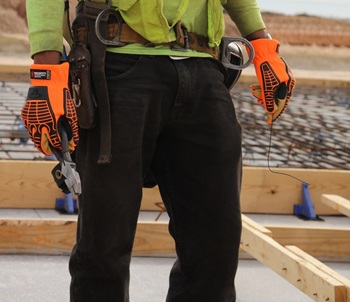
Construction tools can quickly lacerate a worker’s hand.
- Hand tools – 19,430 injuries
- Parts and materials – 14,770 injuries
- Machinery – 12,650 injuries
- Knives – 11,010 injuries
Not listed in our puncture blog, mostly sources of cut injuries:
- Containers, furniture, and fixtures – 9,030 injuries
- Structures and surfaces – 6,320 injuries
- Box cutters and razor knives – 5,440 injuries
- Vehicles – 4,420 injuries
- Metal and woodworking – 3,520 injuries
- Food slicers – 3,050 injuries
- Structural metal materials – 3,030 injuries
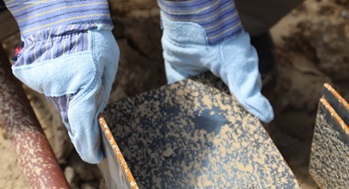
Structural metal is always a cut concern. 1400K (shown here) is lined with DuPont™ Kevlar®.
Events Causing Injuries
Below are the top events that cause cuts and lacerations in the above occupations:
- Contact with objects and equipment – 66,030 injuries
There are many variations of this injury that occur: workers struck by equipment or an object, workers struck against an object or equipment, falling equipment, slipped object, swinging object, object breaking in hand, workers caught in running equipment, etc. - Falls, slips, and trips – 5,240 injuries
- Transportation incidents – 1,070 injuries
Any metal object or equipment will quickly lacerate a worker’s hands.
Applications Where Cut Protection Is Required
| Aircraft Assembly | Handling aluminum strips | Oily metal part handling |
| Autmotive assembly | Handling cables and wires | Plate glass handling |
| Bending, pressing, punching, and shaping metal | Handling mold plates | Power tool handling – drill, nail, and screw gun |
| Carpet knife and installation | Handling plumbing valves | Precision mechanics |
| Circuit board work | Heavy metal stamping | Presswork and metal handling |
| Component aligning and handling | HVAC sheet metal handling | Pulling lines |
| Cutting ductwork and sheet metals | Installing ceramic tiles | Razor knife handling |
| Cutting pipe | Installing electrical boxes | Sharp steel handling |
| Cutting tool operating | Light fixture installation | Sheet metal assembly |
| Deburring | Light metal assembly | Small parts handling w/ sharp edges |
| Delicate metal handling | Light metal fabrication | Solar panel installation |
| Drywalling | Light metal handling | Sub-assembly work |
| Electronics assembly | Light metal stamping | Tree cutting |
| Fastening and wiring | Maintenance repair | Untrimmed parts handling |
| Fisheries and handling fish | Manufacturing appliances | Warehouse receiving / shipping |
| Food canning and bottling | Metal ceiling frame work | Waterproof piping |
| Glass handling and installation | Metal stamping | Window frame installation |
| Grinding and filing | Metal stud framing | Working around sharp edges |
| Moving metal work pieces | Utility knife handling |
Industries Requiring Extreme Cut Protection
Some industries definitely pose a high risk of cuts and lacerations for workers but do not necessarily report a high number of injuries. Why? Because these hazardous industries already understand the importance of work-safety practices and have proactively fitted their workers with extreme cut protection.
- Correctional Facilities – Correctional Officers working in these facilities face many threats from creative prisoners who fashion their own weapons. It’s well-documented that COs won’t wear protective gear that’s uncomfortable or reduces their mobility – pretty much like anyone else in any industry – so prisons have invested in providing these officers the best protection technology can produce.
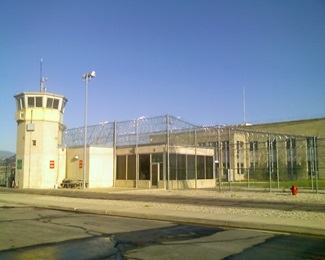
Correctional Facility
- Lumber Industry – This is another high-threat field. From loggers to sawmills to carpenters, working with wood means sharp blades and jagged splinters.
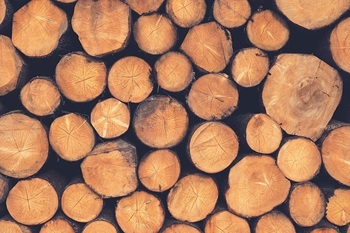
Lumber Logs
- Pulp and Paper – Pulp and paper manufacturing is hazardous due to the massive weights and rolling and sliding pulpwood loads. Workers face serious injury when mounting attachments and removing work pieces from production equipment.
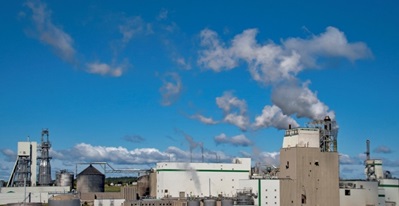
Pulp and Paper Factory
- Recycling and Waste Management – Almost 10% of cuts and lacerations – 8,720 in 2015 – occur in local government. This might seem strange at first, until you remember that city and county governments are usually responsible for trash and recycling collection. According to one study, garbage collection is the third most dangerous job in America, behind fishing and timber works.
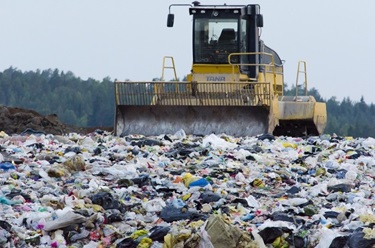
Waste Management
Occupations Requiring Extreme Cut Protection
The above industries are places where you will definitely find extreme cut protection being worn. Here are the top occupations from those industries that absolutely need to be on the lookout for the best cut protection offered:
- Correctional Officers and Jailers – guard inmates in penal or rehabilitation institutions. Searching prisoners for contraband and settling disputes definitely requires the best cut protection.
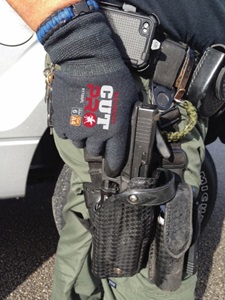
Law Enforcement is an occupation that needs cut protection, extreme protection in many cases.
- Food Preparation Workers – take the #1 spot on the top 20 most dangerous occupations list shown above. They prepare cold foods and grind and slice meats. This occupation uses manual or electric appliances with sharp blades to clean and trim foods.
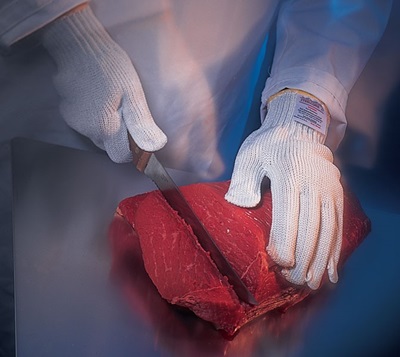
Slicing meat requires the best cut protection.
- Paper Goods Machine Operators – operate machines that convert paper sheets into products. Installing attachments to machines for cutting requires excellent cut and puncture protection.

Pulp and paper is one of the oldest industries, but also one of the most dangerous.
- Refuse and Recyclable Material Collectors – collect and dump recyclable materials. Injury rates for these workers are five to seven times higher than the average worker, with most injuries occurring as lacerations.
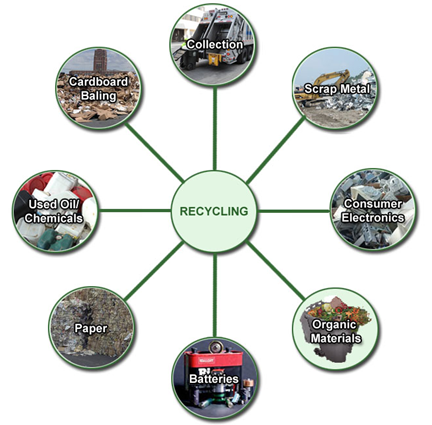
Recycled materials pose direct hazards to workers.
Extreme Cut Protection
As mentioned above, some industries are, simply put, dangerous. They aren’t going to suddenly become less dangerous, so the only way to reduce the risk of cuts and lacerations is to properly protect employees with the highest rated personal protective equipment.
The American National Standards Institute (ANSI) has created a 9-point scale that represents cut resistance. The higher the number, the better the cut resistance.
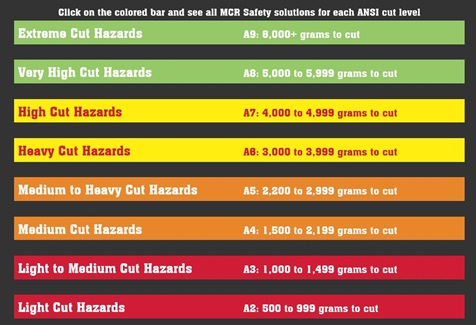
MCR Safety’s cut protection sorting tool by ANSI Cut Score. Click the image to start sorting.
MCR Safety is an industry leader in PPE and offers several ANSI A9-rated products to provide extreme cut protection, even in the most dangerous industries.
- A9 Cut Resistant Sleeves – The 93709MK and 93719MK ambidextrous sleeves provide the highest possible level of cut protection for arms and forearms. These highly cut-resistant sleeves also offer puncture protection and heat-resistance.
- A9 Cut Resistant Apron – The 93130MK apron provides extreme cut protection for the torso. Easily adjustable for multiple sizes, this apron delivers the next level of overall cut protection.
Overall features for A9 sleeves and apron (shown above):
- Modacrylic/Kevlar® blend
- ANSI Cut Level A9
- ANSI Contact Heat Level 5
- ANSI Puncture Level 3
MCR Safety’s A9 Sleeves and Apron are rated ANSI Contact Heat Level 5.
- A9 Cut Resistant Gloves – MCR Safety offers several A9-rated gloves, including the PD2905A, 92735N, and the 9381. All of our gloves combine the best cut protection possible with maximum comfort and superior dexterity. If you want your workers to actually wear their gloves, instead of leaving them in the locker room, we have glove options that meet your needs.
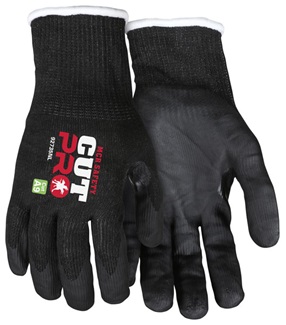
92735N
(Achieves the highest level Cut and Puncture resistant ANSI scores.)
MCR Safety Cut Protection Page
Keep in mind, not every worker needs A9 cut protection, but almost every worker would benefit from at least some level of cut protection. MCR Safety has a full line of A2- to A9-rated gloves designed to provide the safety your workers need to keep your company moving forward. For more information about extreme cut protection and how MCR Safety is advancing the PPE industry, visit our Cut Protection page.
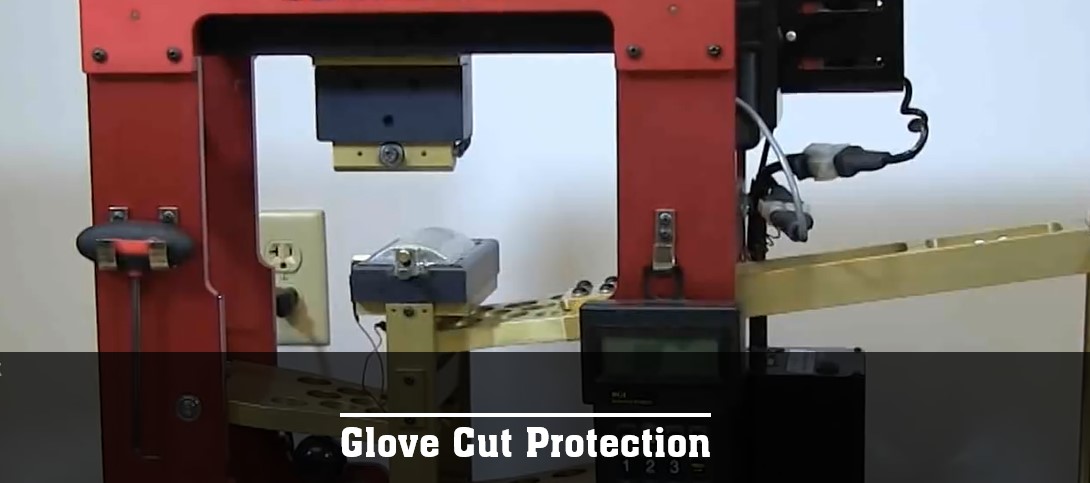
MCR Safety’s cut protection page
For over 45 years, MCR Safety has proven to be a world-leader in gloves, glasses, and garments. Whether it’s on the shop floor, an oil rig, or a construction site, we are there providing solutions to workplace hazards. It’s all part of our commitment to protect people. No matter your industry, we have the personal protection equipment you need. We Protect People!



































